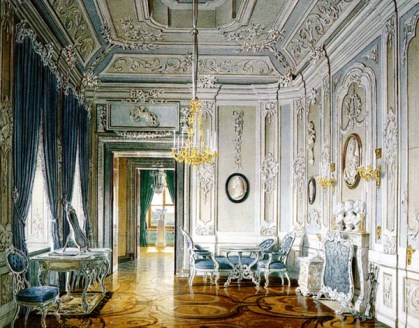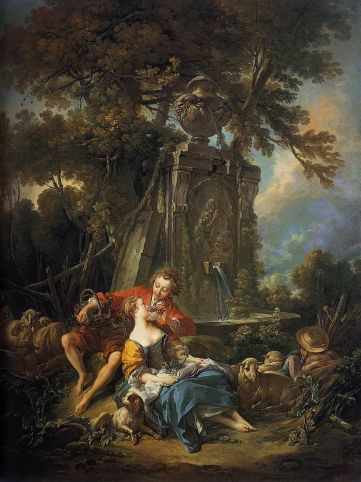Rococo is defined as a courtly art individualistic, anti-formalist and extending from 1730-1760.
It is characterized by a taste for bright, soft and light colors. Predominant forms inspired by nature, mythology, the representation of the naked bodies, oriental art and especially the gallant and loving subjects. It is a basically worldly art, without religious influences, which deals with issues of everyday life and human relationships, a style that aims to reflect what is pleasant, refining, exotic and sensual.
Rococo Features:
1. Decorative World without the complex. The rocaille: rocks with algae and shells.
2. An intimate and friendly to the rigidity and former ceremonial alternative.
3. It aims to delight even an affluent society and gradual rise of the bourgeoisie.
4. Palacios smaller scale with cabinets decorated with exotic elements.
5. broad prospects Baroque vaporous atmospheres are replaced by dissolving environments. Spaces that seek to evoke feelings of ambiguity and uncertainty, playful, sensual and guarantors environments.
In the Rococo representation ceremonies are friendly and simple. Rococo is no longer order, is flourish, spirals that dissolve at the edges. Rococo also enters the concept of wanting to celebrate the life of the bourgeois. It is frivolous, enjoyment and gallantry.
In architecture we can point to many examples, such as the Petit Trianon, a sort of palace that he built Madame de Pompadour, mistress of Louis XIV and Rococo developer who had built this apartment away from the court of Versailles.
There are other examples of architecture like the Basilica of Ottbeuren (1736-1766) in Bavaria or stays inside the Royal Palace in Madrid.
In painting is a series of painters who manage Rococo concepts of gallantry and frivolity. These painters were Antoine Watteau, Francois Boucher and Jean Honoré Fragonard. Canaletto painting that recovers a neutral and clean view of the Venetian cityscape appears in Venice.







